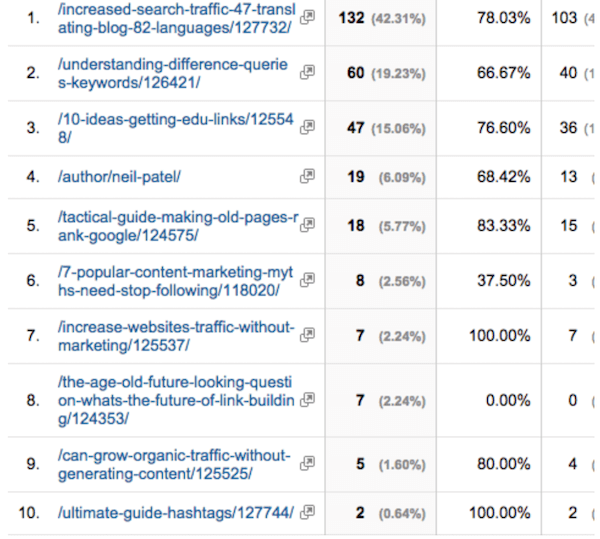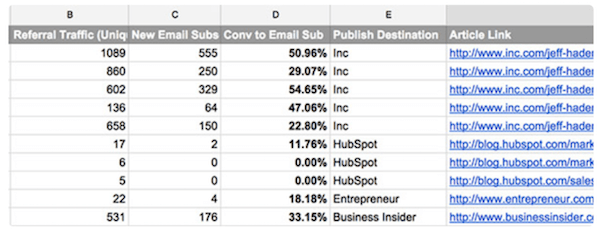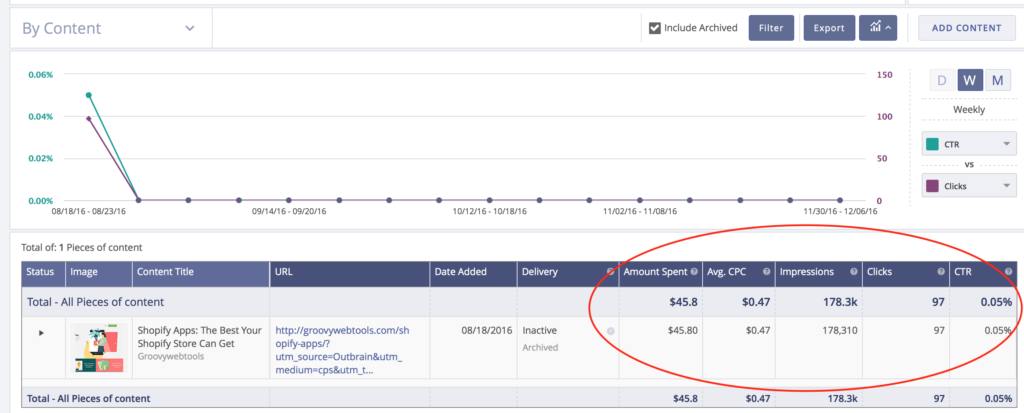Guest posting sucks. Unnecessarily made popular by SEO agencies and earnest bloggers, it gets way too much credit than it deserves.
Have you been checking the web for guest posting opportunities? Did you honestly think that guest posting — for SEO, traffic, branding, or whatever it was that had you convinced — is the best strategy for your business?
Think again.
Clearly, SEO is too hard to deal with and guest posting has no apparent ROI to show for it.
Imagine this: you spend hours and hours just trying to come up with relevant titles only to write in what most people already know. You’d then want to publish only on authority blogs and publications and most of them don’t even allow guest posting anymore.
Assuming they do, the ROI isn’t that great.
But why does everyone, including my neighbor’s cat “Pummy” want to do guest posting? Why, oh Why?
The Power of Transference: Why Guest Posting Is Popular?
Apart from well-known influencers who became well-known partly because of guest posting (those were the days), most others fail miserably after marathon sprints writing themselves to death.
But why? Because of what is known as “Transference”.
Sigmund Freud “Transference” was one of the greatest discoveries in human psychology.
It’s a concept that’s not well-understood outside of clinical psychoanalysis. But this the finding that explains why:
* We choose spouses who are just like our parents.
* People behave the way they do in organizations.
* We are influenced by others in so many ways
* bosses sometimes choose to promote other people instead of someone else (while this “someone” almost thought he or she was the best fit for the new role).
Transference, according to Michael Maccoby of HBR, is the underlying essence of leadership. It explains why people stay glued to their leaders (among many other behavioral repercussions).
It probably also explains why Donald Trump was elected.
But my reason to bring up transference is specifically to do with prevailing SEO practices and Guest Posting.
You do guest posting — and you think, believe, and feel — because people like Danny Iny, Neil patel and anyone else who’d have got to fame with guest posting.
They are leaders. They practice what they preach. They became famous for what they did and it’s very inspirational.
For every blogger who just launched, these are the stalwarts they look up to.
Guess what? They’d just follow.
That’s bad because the results aren’t pretty. You’d just need to read Tim Soulo’s beast of a post that shows you what happened to the show after 273 posts on sites like Inc, HubSpot, Entrepreneur, and Business Insider.
If Guest Posting Is a Numbers’ Game, What’s The Point?
Neil Patel explains that Guest posting is a numbers game. Look into the guest posting story behind every entrepreneur or blogger, and the fact that it’s a numbers game becomes evident.
If it is indeed a numbers game, then it doesn’t make sense anymore; not from an ROI standpoint. Do guest posting for branding, exposure, credibility, and for riding on all those elephants’ backs.
Just not from an ROI standpoint.
Here’s a screenshot from Neil Patel’s blog post on guest posting and the lessons he learned from it.

Here’s another snapshot of results That Ryan Robinson got for his part of the hustle:

If that’s the kind of referrals and traffic you are looking for, well, you don’t need to do guest posting at all.
Even Native Advertising beats results you get from guest posting, and that’s before you get to compare regular PPC Advertising with guest posting.
PPC, When Done Right, Gets You More Than Guest Posting
I ran a short experiment with native advertising with Outbrain a few months ago, and here’s what we got:

That certainly beats my efforts with guest posting.
Consider this, native advertising proves to be a winner.
In 2014, Taco Bell’s Native Advertising campaign for the Live Mas Campaign with the Cantina Bell menu was targeted at millennials, and it just rocked.
Taco Bell managed to get 18% life in purchase intend than banner ads.
Also,
Carly Stec of HubSpot thankfully curated a list of stats for native ads, banner ads, and paid advertising.
1. Native ads are viewed 53% more than banner ads. (Source: Dedicated Media)
2. A retargeting campaign from Magoosh Online Test prep generated $58,608 in attributable revenue. At a total cost of $11,000 the campaign resulted in an ROI of 486%. (Source: Retargeter)
3. Users who are retargeted to are 70% more likely to convert. (Source: Digital Information World)
4. Heineken Light reached 54% of audience — 35 million people — in just three days using video ads on Facebook. (Source: Facebook)
5. Airbnb achieved an engagement rate of over 4% for one of their Promoted Tweets. (Source: Twitter)
6. 32% of consumers said they would share a native ad with friends and family, versus 19% for banner ads. (Source: ShareThrough)
7. Native ads that include rich media boost conversion rates by up to 60%. (Source: Social Times)
8. Julian Bakery saw a 35% increase in conversions and a 330% increase in impressions on the Google Display Network. (Source: Google)
9. 71% of publishers received no major complaints from readers for featuring native ads, while 29% received minor backlash. (Source: Digital Content Next)
10. After one year of leveraging Targeted Status Updates on LinkedIn, ADP’s Company Page followers doubled to 85,000. (Source: LinkedIn)
And we aren’t even getting close to the real power of PPC:
Here’s some data from live campaigns we are working on right now (last 30 days data)
Client 1: Spent $1,342 in 30 days. A total of 4010 clicks and 57 conversions (sales).
Client 2: Spent #207.23 in 30 days (low search volume business) and got 8 leads. 75% of them converted (since this business is more like search and rescue thing).
Client 1, for example, has an ROI of 108%. The client’s campaigns run even without them ever having to bother with writing a single blog post or guest post. The client, in fact, has zero SEO strategy.
Guest Posting Is a Timesuck, Without ROI
Most entrepreneurs and bloggers don’t even take “time” into the equation.
All those snapshots of results you saw — of Neil and Ryan — just take into account a few blog posts published elsewhere, and the resulting traffic out of that effort.
They then measure how many email subscribers they got (but no one tells you how many of those subscribers actually converted into sales).
All that is fine and dandy, but what about the time it takes to publish, say 273 blogs like Tim of BloggerJet did?
A typical Guest blogging process:
- Identify host blogs with good DA
- Reach out to bloggers with topic ideas and pitches
- Follow-up with bloggers who don’t respond.
- Write up “Epic Shit”.
- Edit, proof-read, and Edit again.
- Send the post to the host blog.
- Wait for the blogger to publish.
If a typical blog post itself takes hours, days, weeks, or even months (as in Tim’s case when we wrote his 6000-word beast of a post that examines Guest posting ROI), how much time did you really spend in total?
Assuming this is an ongoing exercise for your business:
- Identify host blogs with good DA: Everyday, 1 hour.
- Reach out to bloggers with topic ideas and pitches: Everyday, 2 hours.
- Follow-up with bloggers who don’t respond: 30 minutes per day.
- Write up “Epic Shit”: 5 hours per post.
- Edit, proofread, and Edit again: 1 hour per post
- Send the post to the host blog: 10 minutes
- Wait for the blogger to publish: Unknown (but we can leave this out of the equation and presume that the blog will be published eventually).
The actual cost (in hours) for a single blog post: 9 hours 40 minutes.
Round it off to 10 hours.
If your hourly price was even $30 per hour, you spent $300 for a guest post?
The Cost of 50 guest posts would then be $15,000 in total.
You better be selling a couple of Boeing Business Jet 2 A.K.A “the Flying Hotel” to make this work for you.
I am not throwing guest posting out with the bath towel. All I am saying is that you should stop obsessing about Guest posting in particular, SEO in general.
Anyway, it’s never a good idea to put all your eggs (and time, and hope, and your business) around one, super-hyped marketing channel
I hope you have a better way to spend your marketing dollars.
What do you think?

Hi Jelina,
Yes, Guest posting is time consuming. But if it was just effort and time, that’s still something we can work with. But what about Blogger egos, the pure expanse of time just trying to chase them, and the sheer effort that’d then go into creating the blog posts? I don’t know. I just seem to be not so convinced about the effort that guest posting is.
Ash
Hi Jelina,
Thank you for stopping. Actually, I am not against Guest posting at all. It’s just that it takes way too much time and for some clients, the ROI is hard to predict unless you are guest posting on some really powerful platforms like CopyBlogger or others like those.
Ash
Hello Ashwin,
Well, I agree that Guest Posting is time consuming method and doe snot work if not done in right way, but if we are looking to create brand then Gust Posting can play major role.
As I myself love posting on various blogs, and that I reach new visitors base, I create relationships with bloggers and overall it helps me a lot.
Anyways, You have done a great Job.
Keep up the good work.
Cheers.
Hey Ravi,
I agree, and I am not saying guest posting doesn’t work at all. But given that clients have no resources to do the hustle needed to get guest posts published (and that it’s already full-time work just to find relevant host blogs), there might just be a chance that the money, time, and resources client spend could be directed to other channels that could work.
Ash
Hey Ash,
There are many people who have built their personal brand just because of the guest posting. Many freelance writers are earning thousands of dollars just because of their guest posts.
I agree that it’s a quite time-consuming but brings more exposure to your blog. You get to meet many new people.
Every person has his own perspectives.
~Ravi